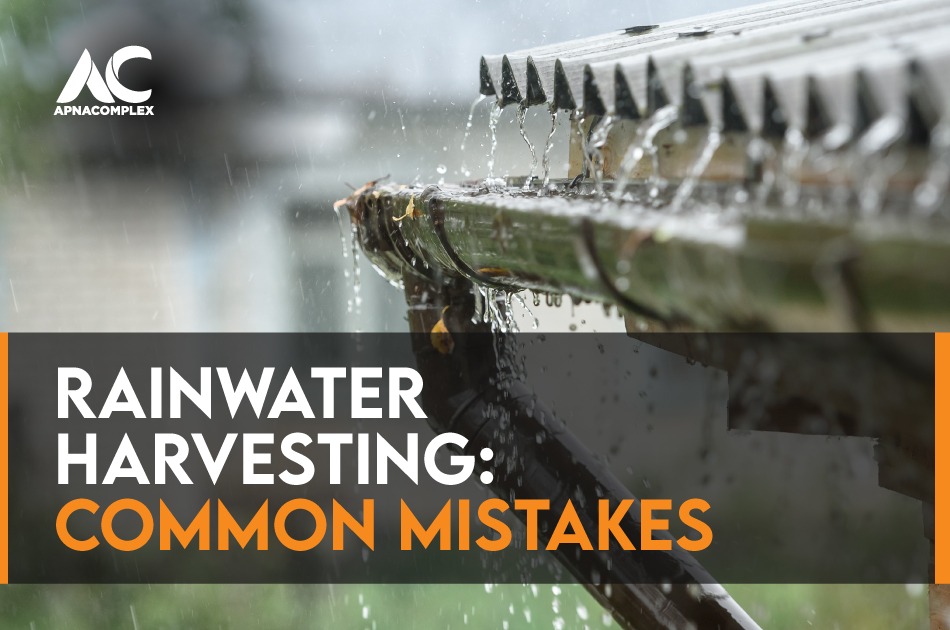Is your Rainwater Harvesting Falling Short? Here’s Why
Product NewsThe impending water crisis in our urban areas has led to the urgent demand for holistic solutions like rainwater harvesting (RWH). As RWH becomes legally mandatory for large and mid-sized residential complexes in an increasing number of cities, many Resident Welfare Associations and apartment Management Committees have taken wholeheartedly to the challenge, setting up RWH structures to maximise their groundwater recharging capabilities.
Unfortunately, good intentions do not always guarantee exemplary solutions. Many societies today find themselves let down by outdated RWH designs. Their water dependence on external sources shows no signs of diminishing even as their borewells run dry. Given this crisis, we must take a look at our goals for RWH and evaluate current practices to understand where we may be falling short.
Why do we need Rainwater Harvesting?
Rainwater harvesting is one of the most traditional means of water storage. It was a means to store excess rainwater to prepare for leaner times. Even in the arid regions of Rajasthan, traditional RWH methods were instrumental in providing local communities with sufficient water during long dry spells. But the main purpose of RWH is to replenish groundwater. In fact, the reason for mandating RWH in urban areas is to recharge the declining levels of groundwater in India.
It becomes even more critical when we consider the alarming depletion in groundwater levels across the country. As per CWMI (Composite Water Management Index), groundwater has been declining by 10-25 mm a year between 2002 and 2016. 54% of the groundwater wells are at severely reduced levels. By 2030, 40% of the population is expected to lose access to drinking water.
Housing complexes in cities like Bengaluru, Mumbai, Hyderabad, Pune, and the NCR region are well acquainted with this reality as their borewells have dried up. Most societies rely on tankers to meet their water requirements. RWH offers a holistic solution that aims to replenish the groundwater. In time, it should resolve issues of drying borewells, helping a housing society to gain water independence.
What’s wrong with your RWH?
Unfortunately, most of the RWH structures used by large or mid-sized societies do not meet the mark as evidenced by their continued dependence on outside sources of water. Many housing societies have reported increasing reliance on tankers even after installing RWH systems. While this may lead us to fault the concept of RWH, the truth probably lies in a faulty design. Most RWH structures are based on outdated designs that may not meet the requirements of a society, are cumbersome to manage, or are difficult to maintain. An inadequate design leads to underperformance with the structure failing to meet its goal.
Common mistakes in RWH
Some of the most common mistakes in RWH design include:
Design according to size
Very often societies tend to go with a standard one-size-fits-all without taking into account their parameters. They fail to consider the catchment area, a key criterion in designing RWH. A catchment area refers to the territory that is used to collect rainwater or drain run-off. It can be the rooftop or an open surface area. The size of the catchment and the rainfall pattern will determine its total harvesting potential and all other design parameters of the system. Accurate measurements are critical in ensuring that the system is neither underdesigned leading to loss of potential water harvest, or overdesigned which can mean unnecessarily increasing costs.
Provide for overflow or bypass
What happens when there is an overflow? It is quite common and can be caused due to excess flow or a blockage. Yet, many societies fail to factor in this contingency, leading to the wastage of the excess water which is simply allowed to drain away. It can cause flooding or the formation of a cesspool situation which may create a health hazard.
Whether it is rooftop or surface rainwater harvesting, we have to ensure provisions for an overflow. It could be for reuse from the storage tank or for bypass from the recharge pit or borewell. The overflow should be directed into the nearest stormwater drain.
Air & Water quality
The location of the society also has a role to play since it impacts the air quality. Rainwater acts as a natural filter in purifying the air, but ends up absorbing the contaminants. Hence, the water in and around highly industrialized areas can have contaminants, which will impact its quality. It is best to check the quality of the rainwater before starting.
It is equally important to test the quality of the filtered water during monsoon when the society already has an RWH setup. Most traditional designs do not have a testing or performance monitoring system and hence, it is difficult to assess their effectiveness without testing. Failing to test the quality of water can lead to complications or poor usage.
If the property size and the lay of the land complicate the RWH project, one should consider working with a company that provides custom solutions. Preference should be given to design-led companies that understand the nuances of contemporary RWH structural designs. This is critical in making a housing society or community water independent, especially where it is dependent on sub-ground water as its primary source.
